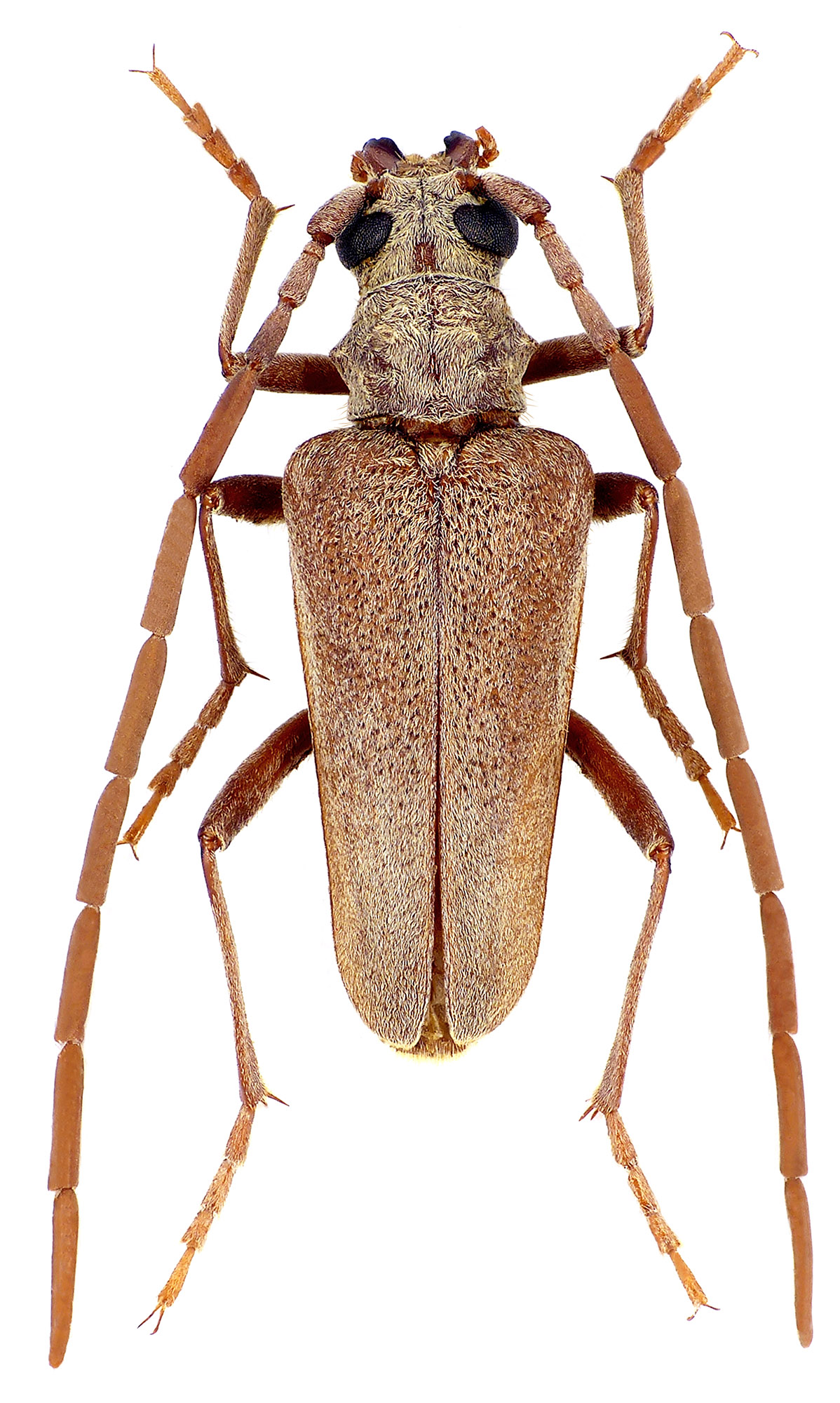Apatophysis barbara, a species known from Algeria and Tunisia only, has been described from "Barbarie" (old name for North Africa) as Poliarthron barbarum
by Pierre Hippolyte Lucas in 1858 [▽]. The larvae of A. barbara develop in the dead wood of a Saharan shrub of genus Limoniastrum, very close to the ground, or
in the soil itself. The larval development is quite long, and can reach seven years. The larvae frequently leave the wood, move in the sand among the host plants and overwinter
in soil. During the summer they retrun and again feed in the stems or on roots of Limoniastrum. Pupation in wood or in the soil, adults are active in May and June. The males fly at dusk and
can be attracted by light. Females can be found on the host plant [✧].
| Body length: | ♂♂ 13 - 19 mm / ♀♀ 16 - 21 mm |
| Life cycle: | 2 and more years |
| Adults in: | May - June |
| Host plant: | Limoniastrum |
| Distribution: | Algeria, Tunisia |
Depicted beetle was collected in Zaafrane (زعفران) desert oasis village (Kebili Governorate, Tunisia) on May 12, 2008.
Collected by Milan Šárovec
[▽]
Lucas P.H.:
Séance du 8 septembre 1858. [note sur quelques insectes du nord de l'Afrique].
Bulletin de la Société Entomologique de France, Paris 1858: clxxvii-clxxxi.
[download  ]
]
[✧]
Villiers A.:
Coléoptères Cérambycides de l'Afrique du Nord.
Faune de l'Empire Français, ORSC Paris, 5: 1-152, 1946.
[download  ]
]


